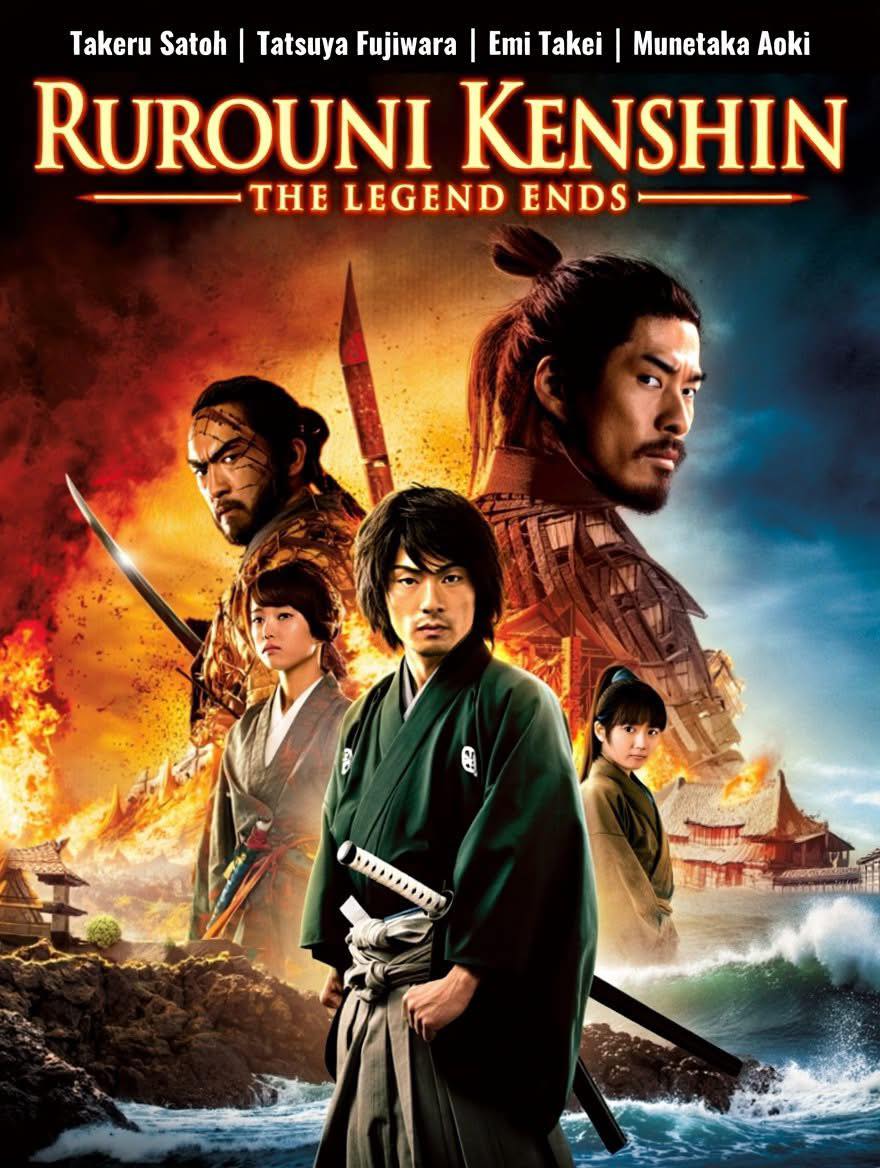Rurouni Kenshin: The Legend Ends (2014)

Related movies :
Rurouni Kenshin: The Legend Ends (2014) – The Epic Conclusion to a Samurai Saga
The Final Chapter Culminates in a Climactic Battle for the Soul of a New Era
The journey of the wanderer with a reverse-blade sword reached its breathtaking and emotional finale in Rurouni Kenshin: The Legend Ends (2014). Directed by Keishi Ōtomo, this second part of a two-part finale (following Kyoto Inferno) masterfully concludes the live-action adaptation of Nobuhiro Watsuki’s beloved manga, delivering on its promise of spectacular swordplay, deep character resolution, and a definitive end to Himura Kenshin’s greatest conflict.
Picking Up the Sword Once More
The film begins precisely where Kyoto Inferno left off: with Kenshin (Takeru Satoh) alive but spiritually broken, having been rescued and taken in by his master, Hiko Seijūrō (Masaharu Fukuyama). The first act is a powerful and introspective training sequence, where Kenshin must confront the failures of his non-lethal philosophy and relearn his master’s ultimate technique, the “Kuzu-ryūsen,” to have any hope of defeating the seemingly invincible Makoto Shishio (Tatsuya Fujiwara).
The Final Confrontation
The core of the film is, of course, the long-awaited showdown between Kenshin and Shishio. Shishio, a former assassin like Kenshin who was betrayed and burned by the Meiji government, represents a dark mirror of Kenshin’s past. His goal is nothing less than the complete overthrow of the government, a plan that comes to a head in a thrilling, large-scale naval assault.

The final battle is a cinematic masterpiece of choreography and emotion. It’s not just a test of strength, but a clash of ideologies: Kenshin’s vow to protect without killing versus Shishio’s belief that power and brutality are the only true currencies in the world.
A Fitting End to the Legend
The Legend Ends succeeds because it balances its epic scale with intimate character moments. The film provides satisfying conclusions for its sprawling cast:
-
Sanosuke Sagara (Munetaka Aoki) proves his loyalty and strength in a brutal fight against the mighty Uonuma Usui.
-
Kaoru Kamiya (Emi Takei) is not merely a damsel in distress but the emotional anchor whose belief in Kenshin’s new path gives him the strength to persevere.
-
Aoshi Shinomori (Yūsuke Iseya) finds redemption after his obsessive quest for vengeance against Kenshin.
Legacy and Impact

Upon its release, The Legend Ends was a massive box office success in Japan and was met with critical acclaim worldwide. It was praised for:
-
Faithful Adaptation: Honoring the spirit and key events of the manga’s “Kyoto Arc.”
-
Stunning Action: The fight choreography by Kenji Tanigaki set a new standard for live-action samurai films.
-
Takeru Satoh’s Performance: Satoh fully embodied the gentle yet formidable spirit of Kenshin, solidifying his place as the definitive live-action portrayal.
The film, together with its two predecessors, proved that high-quality, faithful manga adaptations were possible, paving the way for a new generation of Japanese live-action cinema and leading to the subsequent sequels that continued the story.
In conclusion, Rurouni Kenshin: The Legend Ends is more than just a conclusion; it is the powerful, heartfelt, and action-packed finale that the epic trilogy deserved, cementing its status as one of the greatest manga-to-film adaptations of all time.











